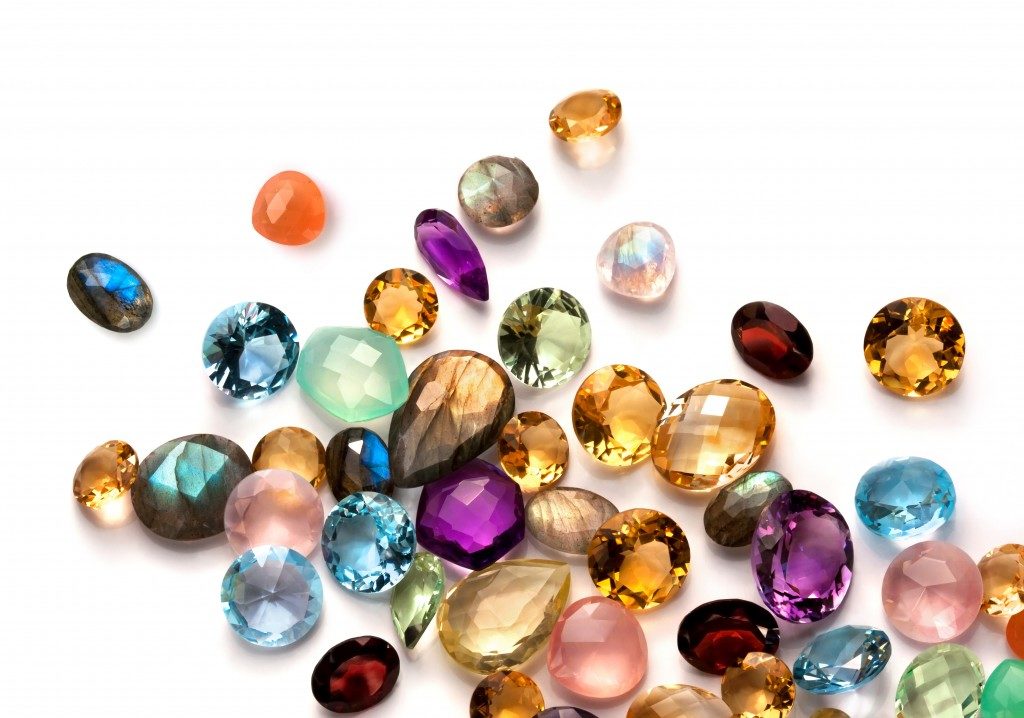Gemstones have, for a long time, been an essential component of engagement rings. While wedding bands for some time have been plain bands, there are nowadays several alternatives for boosting their look and personalizing them. Some couples opt to have their initials and personalized messages engraved along their bands’ interiors. Others opt for gemstones with some symbolism to their relationship or matching their engagement ring. Picking an ideal gem is only part of getting the perfect look for your wedding bands.
You should invest in periodic professional treatments for the gemstones in the yellow gold wedding bands for her and him you picked. The treatments will aim to prolong the durability of the enhancements that have been used for your gemstones. Enhancements for gems are meant to improve their wearability and appearance or get the desired effect. You should keep in mind that these enhancements are done after the formation of your gemstones, so enhanced gemstones are not necessarily synthetic stones. Here are the types of gemstone enhancements jewelers use.
Heat Treating
This marks the most common gemstone enhancement technique more so for corundum gems like sapphires and rubies and aquamarines. At times, aquamarines will come out of the earth with a pure blue tint, but heat treatment might sometimes be used to get a vibrant blue. Heat treatment, however, makes even the hardest and most durable of gemstones slightly brittle. You thus should be careful to avert damage to the pointed faceted edges and corners of your stone.
Bleaching
This involves the use of a chemical that will alter or reduce specific components in a porous gem. At times, the stone might be bleached then dyed to enhance particular characteristics. The most commonly bleached gemstones are jadeite jade and pearls. Jadeite jade, for instance, is typically bleached to remove its brown streaks. Pearls, on the other hand, will be bleached using hydrogen peroxide to improve color uniformity and lighten them. Bleached gems are ordinarily absorbent of liquids and human oils. They should thus be kept dry to prevent damage.

Oiling
Emeralds, rubies, quartz, aquamarines, and diamonds contain internal fractures. As such, their surfaces’ light reflection will significantly affect their brilliance and clarity. Oiling is often used to fill these internal fractures and make the cavities transparent. Some jewelers will use resin, glass, or wax instead of oil to fill in the fractures. Oiled gemstones should be protected from overexposure to heat and chemicals and air pressure changes to guarantee their durability.
Impregnation
This is used for porous gemstones and often in combination with bleaching. Impregnation involves the permeation of plastic, wax, or polymer into your stone to improve its appearance and durability. Turquoise, amazonite, jadeite, serpentine, rhodochrosite, and nephrite are the commonly impregnated gemstones. You should avoid excess and prolonged heat such as that in hot showers and dishwashing with impregnated gemstones to prevent their damage.
Some people assume that DIY polishing with store-bought products is all they need to get their gemstones shining like new ones. The above treatments nonetheless introduce another angle to gems that will affect their look and durability. As such, you should have a professional handle your stones’ polishing and repairs to avoid costly mistakes.

